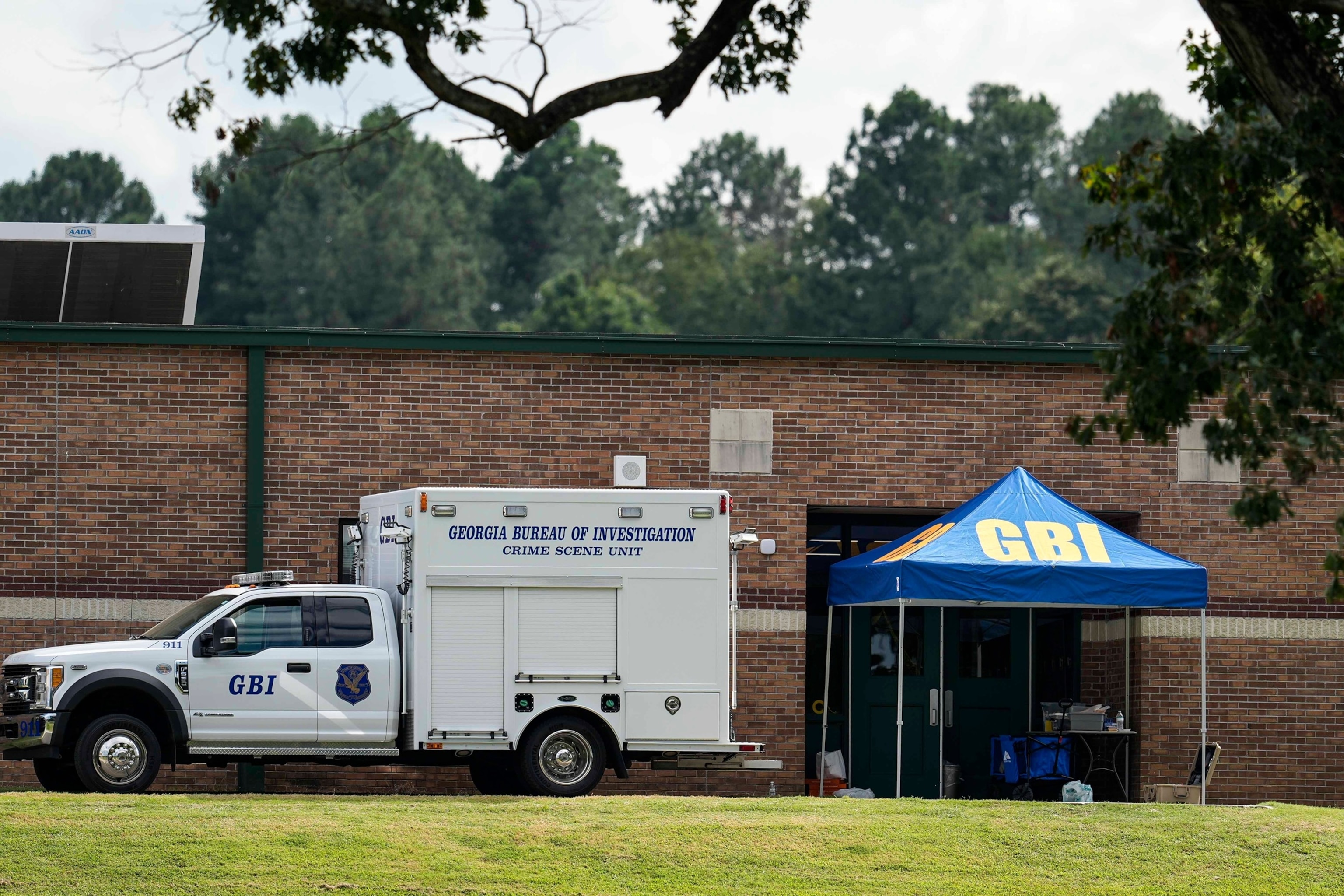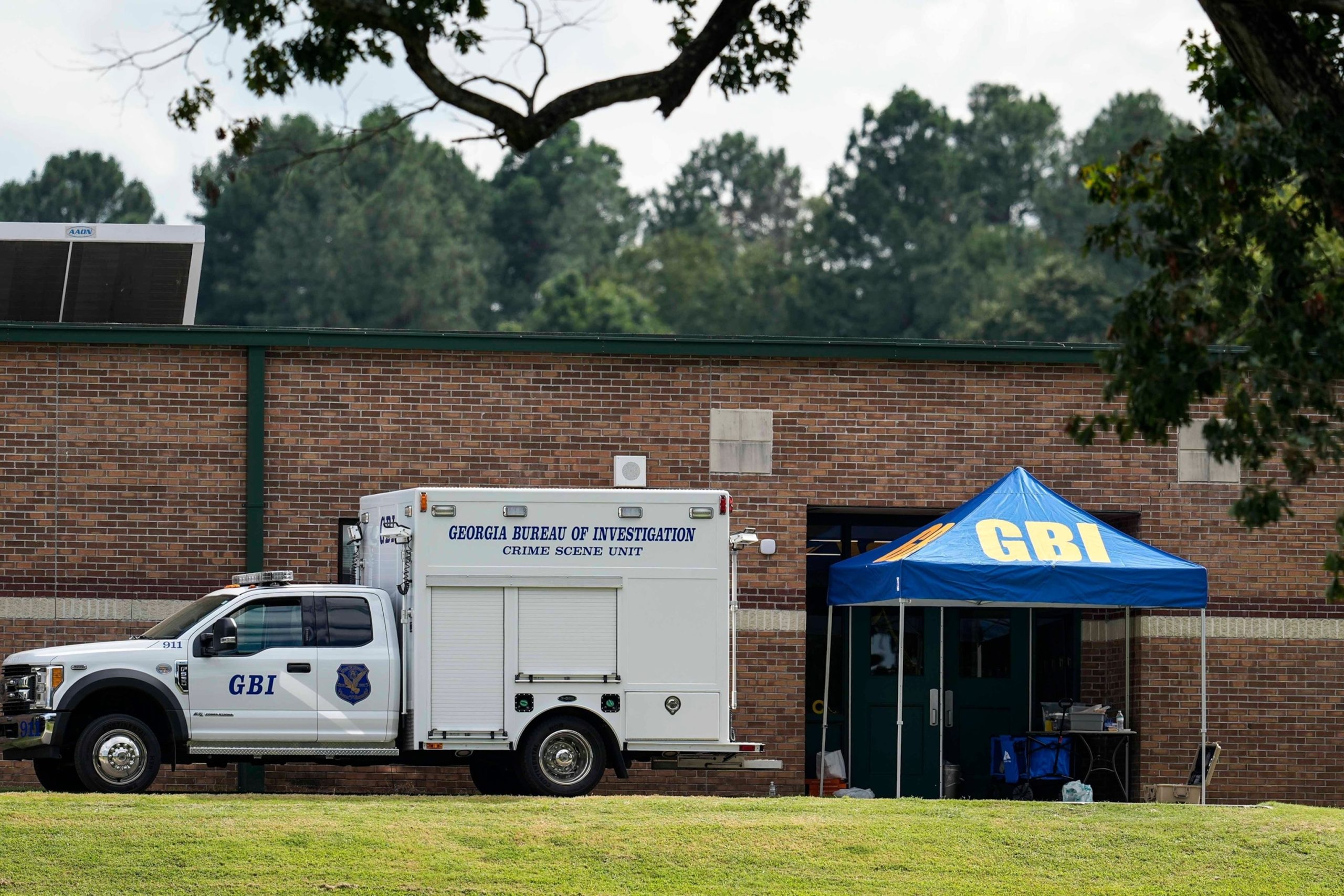The emergency dispatch center fielding reports of an active shooter at a Georgia high school was overwhelmed with 911 calls as the situation unfolded, according to local reports and recordings obtained by ABC News.
When shots rang out at Apalachee High School in Winder, Georgia, on the morning of Sept. 4, 911 calls from witnesses and parents began flooding the local emergency dispatch center, according to the recordings, released Friday by Barrow County officials and first reported by The Associated Press.
Reports from local outlets detail the difficulties callers faced when trying to reach a dispatcher.

Georgia Bureau of Investigation staff move through an entrance to Apalachee High School after Wednesday’s shooting, Sept. 5, 2024, in Winder, Ga.
Mike Stewart/AP
Several 911 calls made in Barrow County around 10:20 a.m. were answered with an automated message that stated, “high call volume,” FOX Atlanta affiliate WAGA reported. The Atlanta Journal-Constitution detailed that one caller was placed on hold for 10 minutes after calling 911.
Other 911 calls were from worried parents attempting to find out what was happening at the school.
One parent whose daughter goes to one of the nearby schools — a middle and elementary school — asked an operator whether there was a school shooter.
“We do have an active situation (at) Apalachee High School right now,” the operator responded. “We have a lot of calls coming in.”
Several 911 calls were not released under public record requests due to state laws that exempt recordings with the voice of someone younger than 18 years old from being released, according to the AP.
Four people were killed after the suspected gunman, 14-year-old Colt Gray, used an AR-15-style rifle to open fire inside the school, according to the Georgia Bureau of Investigation. Seven of the nine people who were injured suffered gunshot wounds, according to the GBI.

Booking photo of Apalachee High School shooting suspect, Colt Gray, released by the Barrow County Sheriff’s Office.
Barrow County Sheriff’s Office
Colt Gray is charged with four counts of felony murder. His father, Colin Gray, is charged with four counts of involuntary manslaughter, two counts of second-degree murder and eight counts of cruelty to children for his alleged involvement by knowingly allowing his son to possess the weapon used in the shooting, the GBI said
Investigators believe Colt Gray received the AR-style gun used in the shooting as a Christmas present from his father, according to sources.
Both Colt Gray and Colin Gray made their first court appearances last week and will return on Dec. 4. Neither has entered a plea.
Apalachee High School students are scheduled to return to class on Sept. 23, the AP reported.
ABC News’ Faith Abubey and Emily Shapiro contributed to this report.
On August 20, 2021, a tragic shooting took place at a high school in Georgia, leaving multiple students injured and the community in shock. As details of the incident continue to emerge, 911 calls made during the chaos have shed light on the overwhelming demand placed on the emergency dispatch center during the crisis.
In the midst of the chaos and confusion that ensued during the shooting, frantic calls flooded the 911 dispatch center as students, teachers, and parents sought help and guidance. Dispatchers worked tirelessly to field and prioritize these calls, coordinating the response of law enforcement, medical personnel, and other emergency services to the scene.
However, as the volume of calls increased and the severity of the situation became apparent, it quickly became clear that the dispatch center was struggling to keep up with the demand. Dispatchers were faced with the daunting task of triaging calls, determining which were most urgent and in need of immediate attention.
The overwhelmed dispatch center faced challenges in effectively communicating with first responders on the ground, coordinating their efforts, and ensuring that resources were being deployed where they were most needed. In some cases, delays in response times were reported as dispatchers worked to manage the influx of calls and prioritize their responses.
Despite these challenges, emergency personnel worked tirelessly to bring the situation under control and provide assistance to those affected by the shooting. The coordination and cooperation between dispatchers, first responders, and other agencies played a crucial role in ensuring a swift and effective response to the crisis.
In the aftermath of the shooting, questions have been raised about the capacity and resources available to emergency dispatch centers in handling large-scale emergencies such as this. It is clear that additional support and resources may be needed to ensure that dispatch centers are adequately equipped to handle such crises in the future.
As the community mourns the loss of life and grapples with the aftermath of this tragic event, it is important to recognize the dedication and hard work of the emergency personnel who responded to the shooting. Their efforts in the face of overwhelming circumstances are a testament to their commitment to serving and protecting their community.
Moving forward, it is essential that lessons are learned from this experience and that steps are taken to strengthen and support emergency dispatch centers in order to better respond to emergencies and ensure the safety and well-being of all members of the community.



